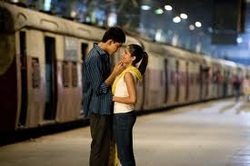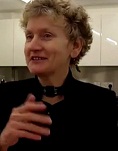
Here's the situation. The writer, Melisha, is having problems with flashback. Check out the full discussion on Linked In. I joined the discussion quite late, so I'm just providing Melisha's comments to to others, and then my answer. People are urging caution and some are advising against flashback.
MELISHA ORIGINAL QUESTION: Ok so I'm a bit torn. I am working on an adaptation of my own book and the book has a critical flashback scene. Should I open with the flashback scene or leave it to tantalize the audience in Act 2? I know some movies start with the flashback as the opening scene but I think this may make my opening scene last longer than 15 minutes and furthermore the flashback is not the point of the script. What do you all think? This adaptation is killing me.
MELISHA RESPONSE 1 : I will approach the script with caution. It is indeed a difficult script to prepare but I'm learning a lot as I go. Do you remember the movie Premonition with Sandra Bullock? I thought this was a good movie that used tons of flashback to tell the story but I was confused the entire time. I don't want to confuse the audience too much but I do have to make these transitions to help the audience understand the antagonist's reason for "stalking" the protagonist. And yes you are right, it was a few centuries ago when they met but only the antagonist is aware of this because he's been living for many centuries.
MELISHA RESPONSE 2: Well this particular flashback is a big piece of the puzzle in the story but it is the subplot so I'm thinking I will add it around the end of Act 2.
MELISHA RESPONSE 3: Let me further break down my dilimma. I have two main characters who met in the past and its a sort of deja vu thing. The storyline is in the present but I have to flashback twice to introduce the audience to the historical characters. So I opened with the antagonist because his story is important but not as important as the one of the protagonist. His flashback is minimal - about 15 minutes and will have a narrator in the background. Her flashback is the subplot and critical to understanding what is going on in the present so I want to place her in Act 2. I don't know if I should open with his flashback or open in the present and somehow squeeze his debut in somehow like as a character is thinking about something then it changes scenes to the character's thoughts.
LINDA's ANSWER
Unfortunately I haven't seen Premonition, so I can't comment on that. However, I might be able to help you in structuring your film. As a writer who could never find any answers about flashback I wrote first one then another book on how to structure a whole family of different types of flashback, also how to structure other types of nonlinear film (for example, Pulp Fiction). The latest book (which is more up to date) is called The 21st Century Screeenplay and it's published by Silman James. It's required reading at NYU and Berkeley and lots of other film schools around the world, as well as being used by professionals, so a lot of people are finding it useful so maybe you will too.
The good news is that successful flashback films work to clear patterns, based on jumping between past and present in very specific ways at very specific points in the three act structure. In a nutshell, they jump on cliffhangers, but very specific cliffhangers and you must get these right or you'll send the audience in completely the wrong direction. The patterns are so clear that you can use them as templates.
There are actually quite a few different types of flashback, each structured differently, so you need to work out which suits your purpose. The rule is content dictates structure. For example, Slumdog Millionaire jumps back and forth between past and present with a storyline in each, whereas Goodfellas starts in the middle of the film with a crucial scene, then jumps back to the start and continues straight through from beginning to end with no more flashbacks. And there's another kind of flashback that I call a 'Life Changing Incident ' flashback, which is an incremental flashback - that is, one crucial event revealed bit by bit- as in Twelve Monkeys or Catch 22. And so on. As I say, each of these types is structured in a different way, with the jumps occurring at different times in each.
Yes, you could indeed simply tell the past through exposition, but think of Slumdog Millionaire without the flashbacks, all told through dialogue in the present. It wouldn't be half as vivid.
It's hard to comment on how precisely you should structure your film. It could feel very jerky if you open on one character, follow it for fifteen minutes, then switch to another. It may well feel as if we're in another film. My feeling is that your most likely bet is to start in the present at the second act turning point - then jump back to the disturbance of the story in the past. That's how many of these films start. That way, you should avoid the start-stop effect. But I could be wrong here. You may need to start elsewhere. You might need a different structure to suit your purpose. I stress this stuff isn't easy. . I've got some advice on my website www.lindaaronson.com but try to get hold of a copy of one of my books (they're in lots of libraries) because there are all kinds of ways to get in a mess with flashback. Good luck
 RSS Feed
RSS Feed


